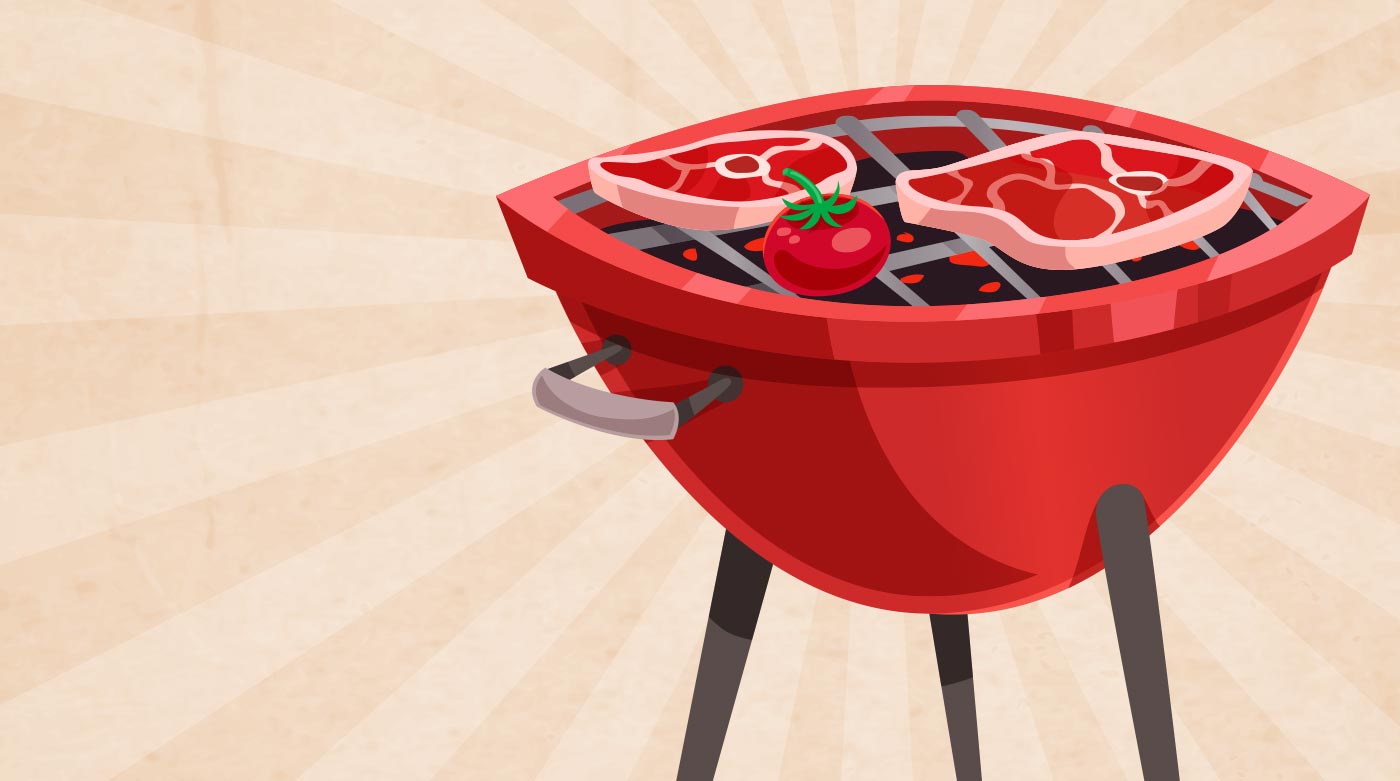Let’s discuss the meat protein part of the kidney stone diet—it has always confused people, so let’s see if I can clarify this.
The first thing patients usually say to me is, “I don’t eat red meat, Jill!” But, when we ask you to lower your meat protein, we also talk about ALL meat and seafood. Chicken, pork, turkey, fish…all of it. These are all foods that contain purine which breaks down into uric acid. Too much uric acid can lower your pH, lower your citrate levels, and increase calcium levels. All of these factors can increase your risk for kidney stones. Overeating meat typically means overconsumption of sodium. And this, too, will add to higher urine calcium levels.
You don’t need to avoid meat, but you can’t eat it in vast quantities daily. It’s advised that you eat within your KSD guidelines.
On the flip side, I also speak to many vegetarian stone formers—many of whom are on a plant-based diet at their doctor’s recommendation. It’s not the plant-based diet that’s to blame, though; it’s the overeating of high-oxalate foods (beans, spinach, almond products) without fulfilling daily calcium requirements.
Perfect kidney stone storm!
This is why I say to eat various foods daily and in normal portions. Don’t eat the same foods in large amounts because they are the latest “superfood.” All produce is a superfood (spinach, not so much for stoners). Don’t fall for the marketing bulldoo.
How do plant-based people get protein and not exceed their daily oxalate level?
A common and understandable concern for my vegan and veggie patients is the prospect of HAVING to eat meat to lower oxalate levels. Not to worry, lowering oxalate while maintaining a meat-free lifestyle is possible.
How much TOTAL protein do you need each day?
While exact amounts vary based on medical conditions, age, and activity levels, most people can safely consume up to 1.4 g/kg of total protein daily.
Do dairy, legumes, and soy products count as meat protein?
No. These foods do not raise uric acid levels; you can add them to your day and your meat protein. Some of these foods are high in oxalate and saturated fats, so portion, not perfection, applies here. Also, let me clarify that one should not eat as many of these foods as one wants. Eat within portion size.
What about eggs?
Eggs ARE animal protein. But I am careful here as vegetarians stop eating them if I put them into the meat limit section and then run around with lower protein. This doesn’t mean you can’t eat them. It means to have them within a portion. Don’t eat your meat quota for the day; eat ten eggs as well (you would be surprised to know what I hear daily). Have a couple if you desire. If your doc has told you to watch animal protein, he/she does mean eggs too, but I always feel it comes with an insufficient explanation, and patients stop eating eggs, which leads to the dreaded- “there is nothing left to eat” scenario.
How to calculate your MEAT protein needs.
I have a handy dandy meat protein calculator on my website that will help you figure out how much meat/seafood protein you can safely have daily on the kidney stone diet.
How much protein is in meat?
There are 7 grams of protein per ounce (within a couple of points) of meat/seafood. The deck of cards analogy is often used for three ounces of meat for a visual. Or the palm of your hand. So three ounces of chicken is about 21 grams of protein (know, there will be a 2-3 gram difference for each meat type – don’t fret over small amounts like this). You do not have to be perfect, so most people get overwhelmed. I am trying to save you time by looking up each type of meat. Use 7g as an average, and you will be just fine!
Are you telling me, old lady, that I should buy a kitchen scale?
A kitchen scale is a good idea (insert your eye roll here). I have one*. They cost under ten bucks on Amazon, and like anything else, once you get used to it, it becomes invaluable in keeping you honest in the kitchen! I can’t tell you how many patients I’ve worked with resisted the kitchen scale. But, after using one for a few months, you train your eye to what a standard portion size looks like.
I also measure my carbs as I am a terrible guesser in all things visual and spacial.
Do I use the before-cooking meat weight or after cooking weight?
You weigh your meat portion after it has been cooked.
How much protein is too much?
Most people can safely consume up to 1.4 grams/kg of total protein daily. Some of you who are into rigorous bodybuilding may be eating more, but that’s fine as long as you’re not overeating meat and getting protein through various foods. Having protein with each meal and snack is a good idea. Eating foods that contain protein will help keep you full. But overeating can lead to eating too many calories, and at some point, you gain no benefit (i.e., bigger muscles). Stay within your range for your activity level and your medical needs.
Protein Smoothies.
People say, “Jill doesn’t want us to have smoothies.” Nope, that is not what I say. You can certainly include smoothies in your week if you keep your protein powders under 200 calories and pay attention to the sodium and sugar in these products.
I like my protein powders to be closer to 100 calories per serving as I am adding a banana typically in mine, which will increase the calories! I use this one* because it’s lactose-free. It is higher in sodium, but I make room for that in my daily salt budget. I occasionally use smoothies after a workout as a snack. Here is my recipe, and it is so darn good! It doesn’t include the protein powder because I don’t always need it. Sometimes I am just looking for a way to boost my calcium intake. If you are vegan, here is an excellent protein powder source with iron in it, no salt, and no added sugar. Game Changer!
Be mindful of how many calories are in your smoothies, though. High-calorie smoothies are often the culprit for weight gain—it’s not hard to pack 500 calories into these tasty treats.
I am not a fan of people using smoothies regularly as meal replacements. While this may lead to initial weight loss, in the long run, we need to learn how to eat foods that will lead to long-term health. Drinking your food is not what I recommend long term. It always backfires on us.
For people looking to gain weight, smoothies (whether you use protein powder or not) can be a great snack to increase your calories.
I hope this article helps new kidney stone patients understand the meat protein part of the Kidney Stone Diet.
Your friend and advocate,
Jill
P.S. I am an Amazon affiliate and may make a nickel or two off items I suggest.














Leave a Reply